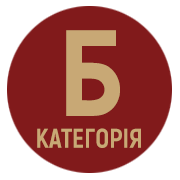FORMATION OF THE AESTHETIC CULTURE OF PRIMARY EDUCATION STUDENTS IN THE PROCESS OF LEARNING THE ART EDUCATION FIELD AT THE NEW UKRAINIAN SCHOOL
DOI:
https://doi.org/10.32782/apv/2024.3.2Keywords:
aesthetic culture, aesthetic value, aesthetic tastes, works of art, students of primary education of the New Ukrainian SchoolAbstract
The article highlights the issue of the formation of aesthetic culture in students of primary education of the New Ukrainian School, describes the knowledge of art through artistic images, focuses attention on the development of a sense of beauty and the desire to create beauty in younger schoolchildren. The purpose of the publication is to reveal the peculiarities of the creative activity of students of primary education in the New Ukrainian School in art lessons. Scientific research emphasizes that in the educational process, teaching methods in the art education field encourage active mental and practical activity of teachers in the process of mastering the skills of aesthetic orientation, contribute to the development of their creative abilities, cognitive activity and independence, mastering the skills of professional mastery. The practical experience of studying the issue of the formation of aesthetic culture in younger schoolchildren proves that various types of art influence the formation of aesthetic sense, which is an important indicator of the aesthetic development of a child of younger school age. In practical activities, elementary school students’ knowledge of art forms is expanded, love for various types of aesthetic activities, Ukrainian culture and their tastes is formed. In art classes, students of primary education learn to perceive the beauty of the surrounding reality, to feel works of art that are built into a certain interfunctional system. Practical activities develop aesthetic values for Ukrainian culture and love for art in children of primary school age. The article defines the aesthetic culture of students of primary education as an integral personal characteristic, which is determined by the features of aesthetic consciousness and aesthetic activity at the moment of their life, at a certain stage of its development at the level accessible to a child; as a set of components of the aesthetic culture of the individual, which is fixed on the student at a certain stage of his development; as an aesthetic value orientation of the child, involving him in the activities of mastering and transforming the world according to the laws of beauty. Therefore, in art lessons at the New Ukrainian School, it is worth taking into account the age-specific features of the formation of the aesthetic culture of younger schoolchildren.
References
Андрієвський Б. М., Голінська Т. М. Естетичний розвиток молодших школярів засобами синтезу мистецтв: Монографія. Херсон: Айлант, 2007. 184 с.
Балл Г. О. (2002). Про визначальні характеристики здібностей і принципи їх врахування у навчально-виховній роботі. Психологія. 2002. № 2. С. 2–4.
Барко В. Психолого-педагогічна діагностика творчого потенціалу особистості учня в навально-виховному процесі. Київ, 2000. 85 с.
Волобуєва Т. Б. Розвиток творчої компетентності школярів. Харків: Вид. група «Основа», 2005. 112 с.
Волощук І. З. Методи розвитку творчих здібностей учнів молодшого шкільного віку. Київ, 1998. 96 с.
Гіптерс З. (2001). Мистецтво як засіб художньо-естетичного виховання. Рідна школа. 2001. № 9. С. 60–63.
Глінська І. П. Образотворче мистецтво. Методика навчання у 1–4 класах. Київ: Педагогіка, 1994. 86 с.
Голінська Т. М. Аналіз педагогічного досвіду з естетичного виховання дітей молодшого шкільного віку / Психолого-педагогічні умови вдосконалення підготовки кадрового потенціалу закладів дошкільної та початкової освіти: колективна монографія. За заг. ред. Б.М. Андрієвського. Херсон: ХНТУ, 2021. С. 47–68.
Голінська Т. М., Гарькава, Г. С. Комунікативні вміння професійної діяльності фахівців як предмет психолого-педагогічного вивчення / Distance learning in universities and modern problems. 2023. November. 07–10. Budapest, Hungary. International Science Group. РР. 169–173.
Дворак І. О. Педагогічні умови сприймання різних видів і жанрів образотворчого мистецтва. Гуманізація навчально-виховного процесу. Наук.-метод. зб. Слов’янськ. 2002. Вип. 15. С. 246–249.
Демченко І. І. (2002). В. О. Сухомлинський про творчий розвиток молодших школярів через образотворче мистецтво. Рідна школа. 2002. № 12. С. 18–19.
Кириченко М. А. Основи образотворчої грамоти: Навч. посібник. Київ: Вища школа, 2002. 190 с.
Коберник Г. Виховний та розвивальний потенціал інтерактивних технологій навчання. Сільська школа України. 2006. № 16. С. 18.
Конопко О. (2000). Перші кроки до мистецтва. Початкова школа. 2000. № 3. С. 25–28.
Котляр, В. П. Основи образотворчого мистецтва і методика художнього виховання дітей. Київ: Кондор, 2006. 200 с.
Масол, Л. М. Загальна мистецька освіта: теорія і практика: монографія. Київ: Промінь, 2006. 432 с.
Мелік-Пашаєв, А. А. Художня обдарованість дітей, її виявлення та розвиток. Київ: Фенікс, 2006. 112 с.
Пасічний, А. М. (2003). Образотворче мистецтво: Словник-довідник. Тернопіль: Навчальна книга – Богдан, 2003. 259 с.
Пометун, О. І. Сучасний урок. Інтерактивні технології навчання. Наук.-метод. посібник. Київ: Видавництво А.С.К., 2006. 192 с.







